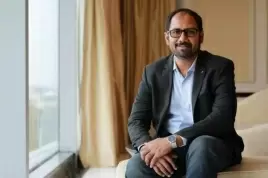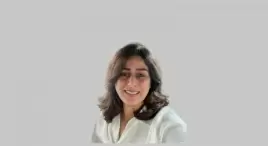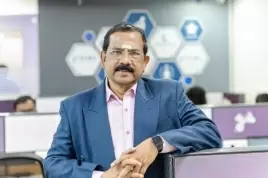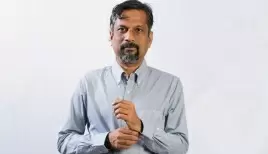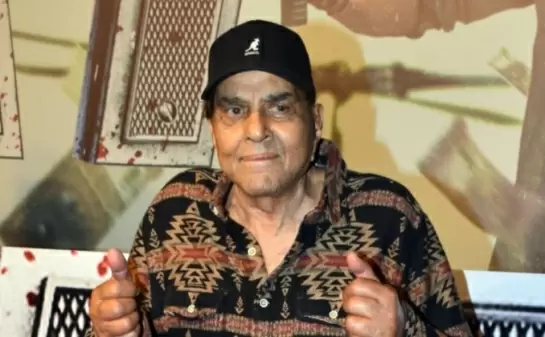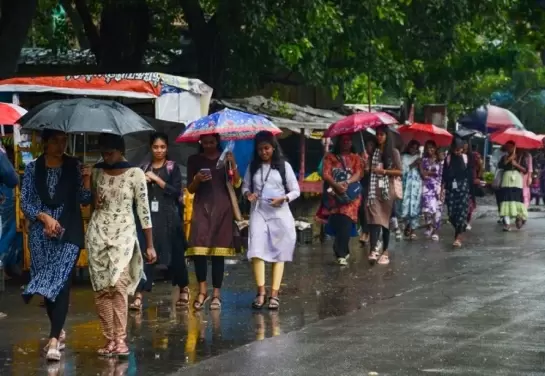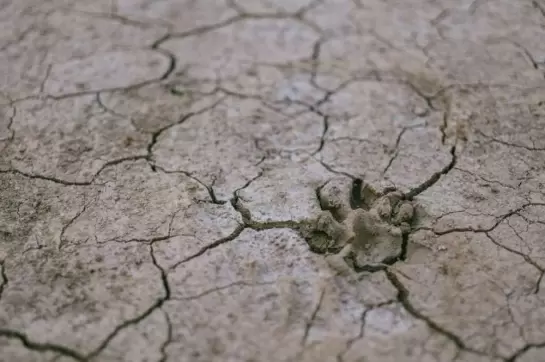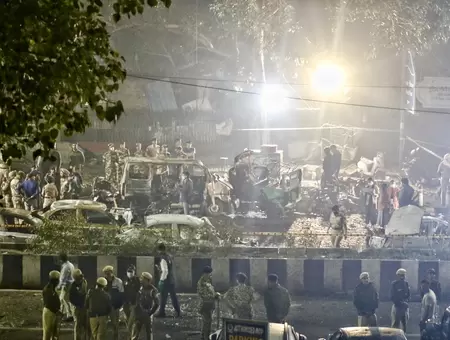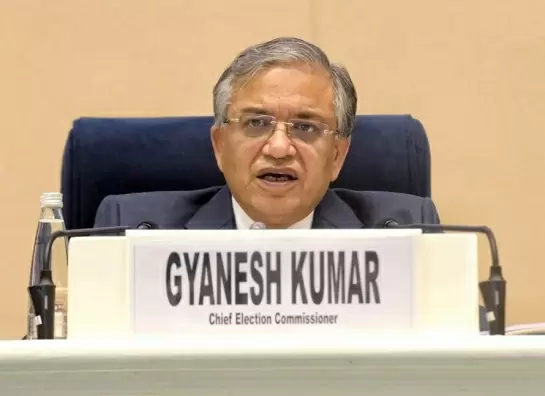Odisha’s Terracotta Mural Master: How Srikrushna Khanda Kept a Dying Art Alive
Niroj Ranjan Misra
| Bhubaneswar
10-October-2025
Vol 16 | Issue 41
If the three-dimensional terracotta figures made by artisan Srikrushna Khanda of Odisha’s Mayurbhanj district reflect his talent, his two-dimensional terracotta murals outshine them.
He has created over 1,500 mural pieces compared to about 100 terracotta figures, showing that his love for the two-dimensional form surpasses his fascination for the three-dimensional.
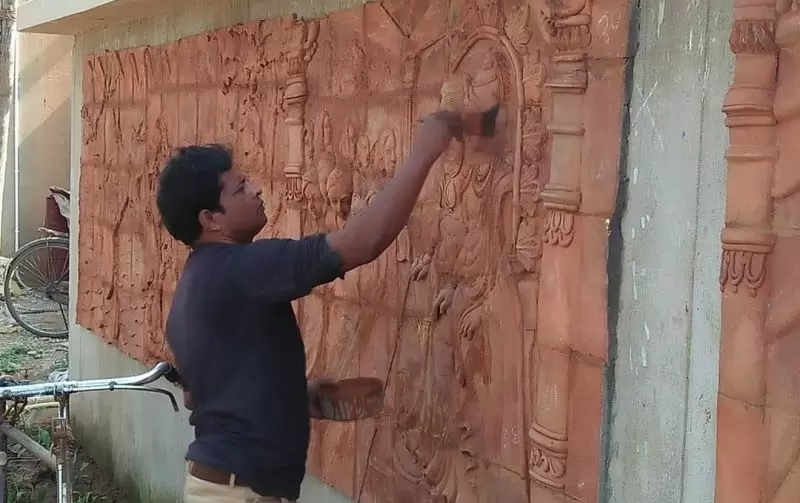
| A young Srikrushna Khanda immersed in creating art at his Karukriti studio (photos: Special Arrangement) |
Claimed to be the only terracotta mural artisan in Odisha, and one among just seven or eight in India, Srikrushna, from Mudhunanda village, had to struggle hard to pursue his passion. Today, his murals adorn not only several places in Odisha but also distant states such as Punjab and Uttarakhand.
Working single-handedly from his studio Karukriti in his native village, about 40 kilometres from Baripada, he has mastered this intricate craft without a formal teacher, becoming his own guru.
“My fascination for terracotta murals is deeper than my love for terracotta. But the latter forms the very foundation of the former,” says Srikrushna.
His terracotta murals have been installed in several locations across India. One of his most impressive works is the 530 ft x 8 ft terracotta mural wall around Kusuma Lake in Jajpur town, Odisha.
Installed in 2017 at the request of Jajpur Municipality, the mural depicts stories from the Jataka Tales of Lord Buddha.
“The Kusuma Lake wall is one of its kind in Jajpur district. Whenever I find time, I visit to admire its artistic beauty,” says Sachidananda Panda, headmaster of Bapuji Ucha Vidyalaya in Karada village.
Another remarkable creation, completed in 2023 at Jajati Keshri Medical College and Hospital, portrays the daring 1947 rescue mission of Biju Patnaik, who flew his Dakota aircraft to save Indonesian leaders Muhammad Hatta and Sutan Sjahrir at Jawaharlal Nehru’s request.
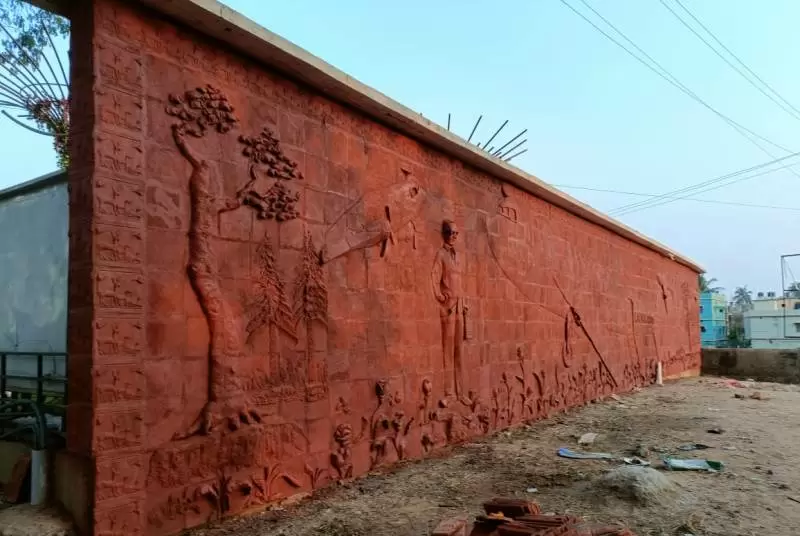
| Mural depicting young aviator Biju Patnaik's rescue mission with his Dakota aircraft |
The same year, Srikrushna created four terracotta mural masterpieces for Teg Bahadur Public School in Dhuri, Sangrur district, Punjab. These murals depict the war exploits of Maharaja Ranjit Singh, the growth of education in Punjab, the state’s history, and its culture.
Earlier, he crafted two murals for Sainik School, Nainital, in Uttarakhand — one illustrating the Kargil War and another triangular mural showing India’s victory marked by the hoisting of the national flag.
By 2020–21, when he charged Rs 300 per square foot for his terracotta and mural work, his annual turnover was barely around Rs 4 lakh. Now he charges Rs 900 per square foot and earns between Rs 10 lakh and Rs 12 lakh a year.
However, his income sometimes drops sharply, and he feels the pinch of a financial crunch. So, he has taken to making baked mud glasses for restaurants, hotels, and tea stalls in Mayurbhanj, engaging five women who earn Rs. 250 per working day each.
“I sell each mud glass for Rs 1.70. On average, I earn Rs 25,000 to Rs 30,000 a month. Demand is growing by about 10–15 percent every year,” he says. During this time, he also created a few terracotta sculptures, including a Bonda tribal woman, Lord Ganesh, and a decorative pot.
Srikrushna came up the hard way. His father, Ramachandra, owned only an acre of paddy land and had to take up odd jobs, while his mother, Subhasamani, prepared and sold mudhi (puffed rice) to sustain the family and pay for his studies.
Between 1992 and 1997, he studied at the Government College of Art and Crafts (GCAC) in Khallikote, Ganjam district, where he specialised in sculpture.
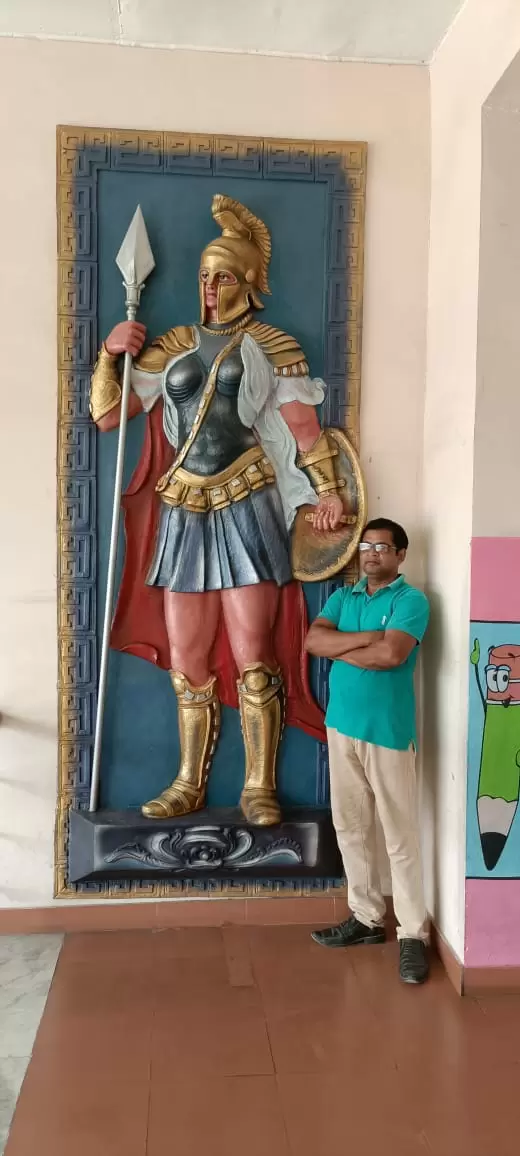
| A mural portraying a valiant warrior from bygone times |
There he gained a strong theoretical foundation in both terracotta and terracotta mural art, which he refined through patience and practice.
“Terracotta and mural art were part of my specialisation in sculpture. During my studies, I realised that these were my true calling, and I devoted myself completely to mastering them,” he recalls.
Before joining GCAC, he cycled 20 kilometres daily to attend Fakir Mohan College in Balesore. His family’s sacrifices made his artistic journey possible.
“I received only a Rs 10,000 stipend in my fourth year at GCAC. My parents and brothers — Pranakrushna, Harekrushna, and Jayakrishna — supported me by selling my mother’s mudhi,” he says. “We all wanted him to study without any difficulty, so we stood by him,” adds his mother.
After completing his degree in 1998, he started his artistic venture Karukriti in his village, employing two workers who assist in preparing clay. They mix chikita mati and patu mati (types of clay) in a 60:40 ratio, sometimes adding normal clay if needed. Each tractor load of clay costs Rs 500.
Tiles of 1’x1’ are shaped, sculpted, and dried under shade for several days. Once ready, they are baked in a large mud oven (bhati) and later fixed on wet cement to form a mural.
“For terracotta figures, I use only chikita mati, but the mural requires a mix of both clays,” he explains.
In the early years, marketing his work was a challenge. He went door to door to get people interested but refused to take up a regular job, believing it would restrict his creativity.
In 2000, he joined a workshop organised by the District Industries Centre (DIC) in Baripada to refine his skills under a government initiative promoting terracotta art.
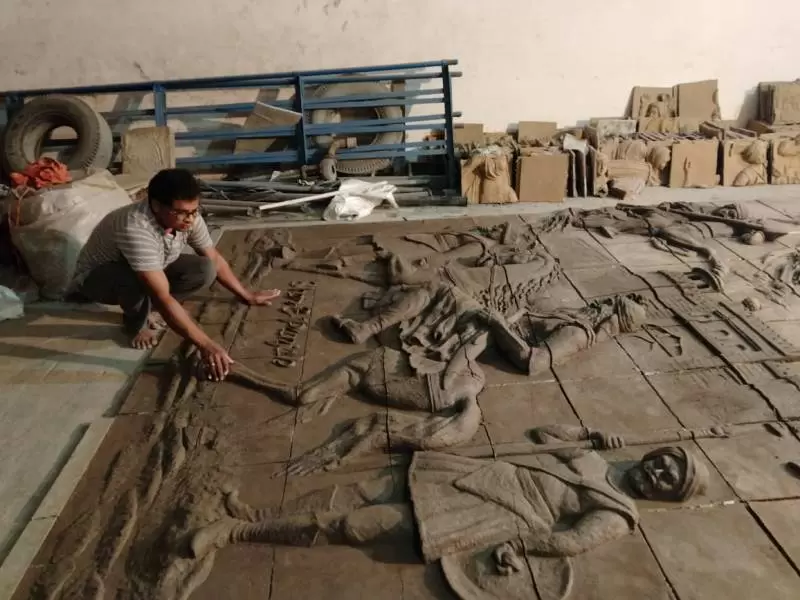
| Srikrushna Khanda at work |
His life remained tough even after his marriage in 2002 and the birth of his daughter in 2003. He was felicitated by Chief Minister Naveen Patnaik at Dhauli near Bhubaneswar as the Best Potter (Terracotta Artisan), receiving a Rs 10,000 cash award.
In 2007, a year before his son was born, he was empanelled as a designer with the Deputy Commissioner (Handicrafts) under the Union Government. He trained around 450 artisans across India in terracotta design, earning Rs 60,000 for 15-day sessions and Rs 2 lakh for six-month programmes.
Slowly and steadily, his creations began to attract public attention, and his income started to grow. Today, he leads a comfortable life, devoted to his art and committed to preserving this traditional craft for future generations.



